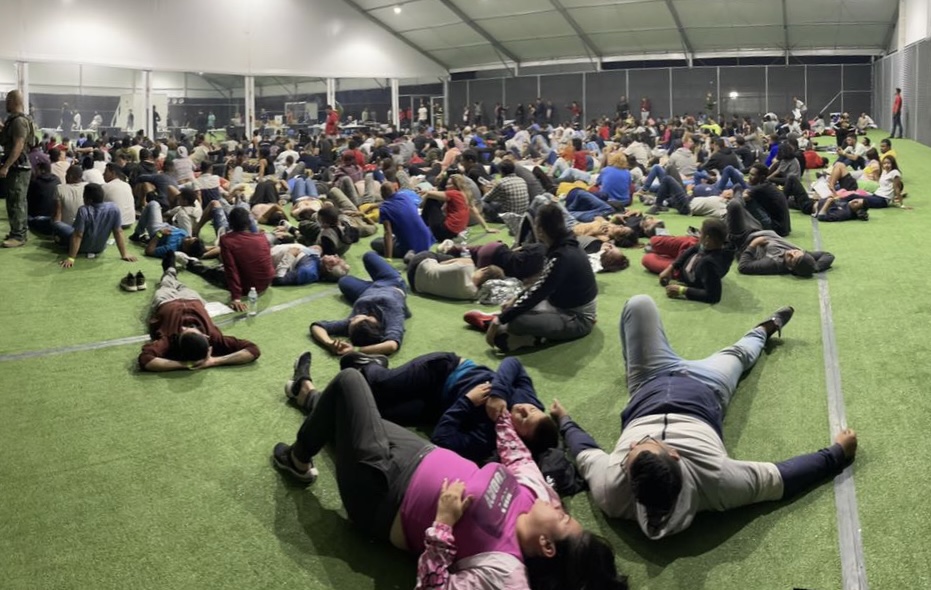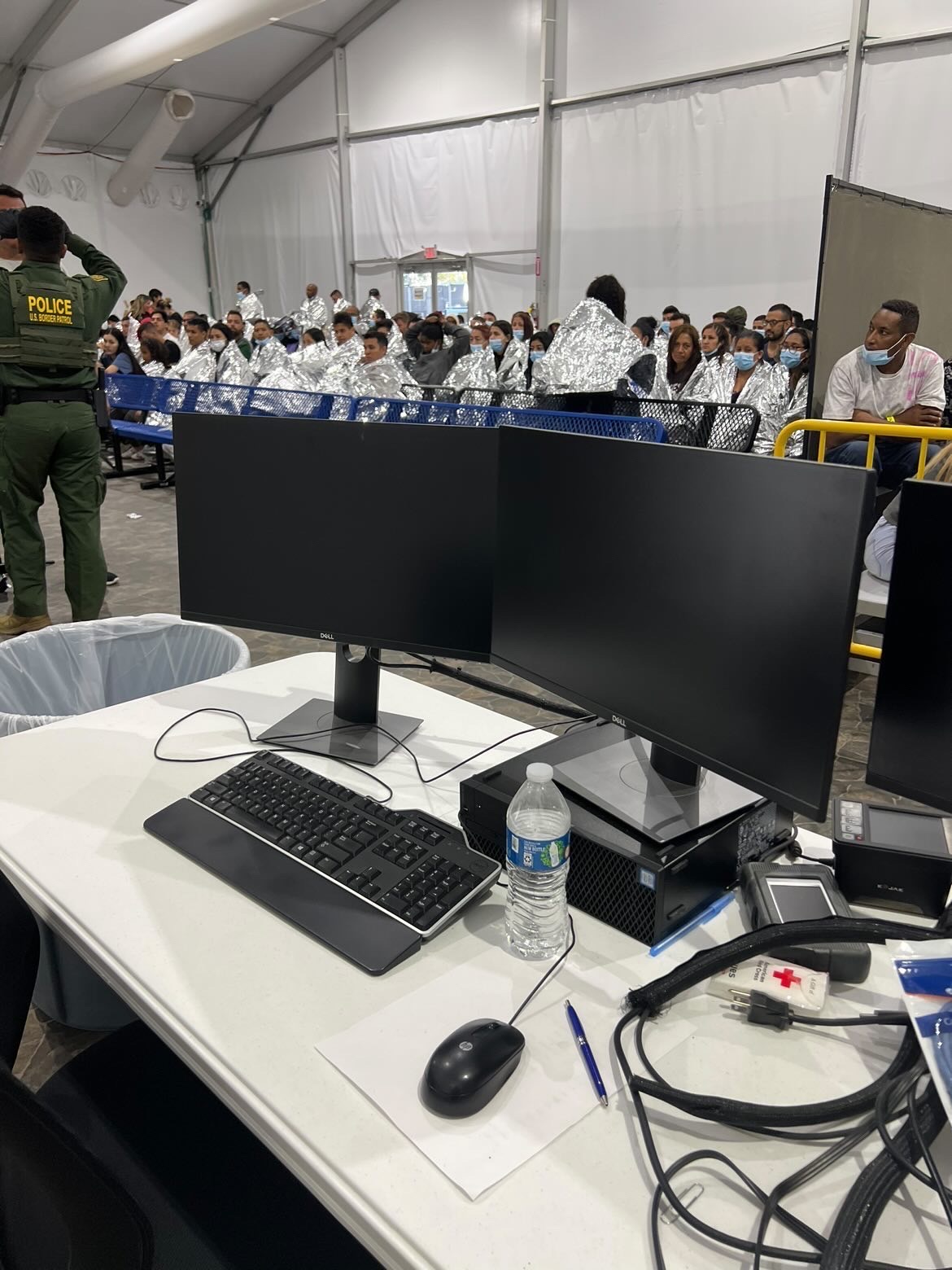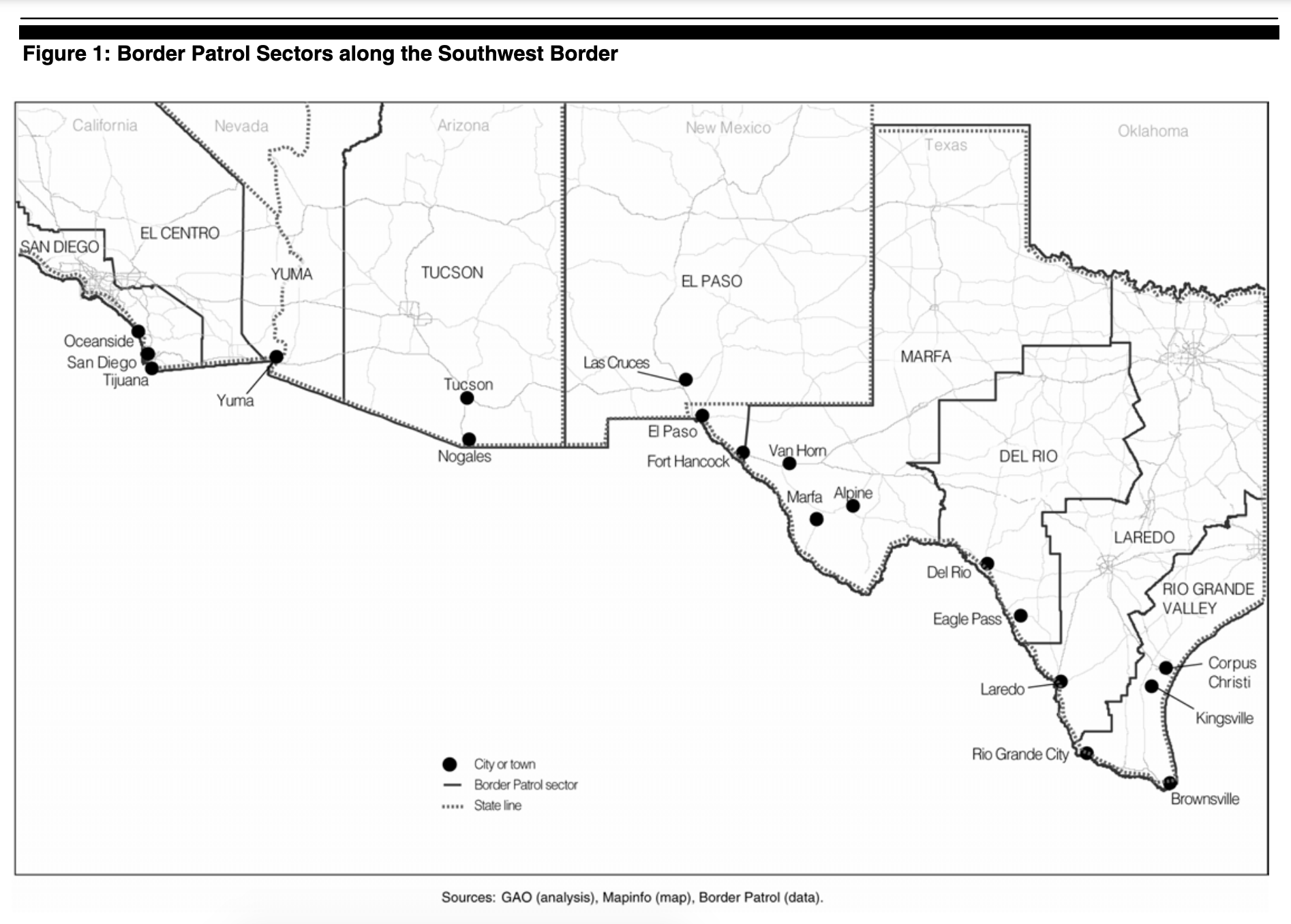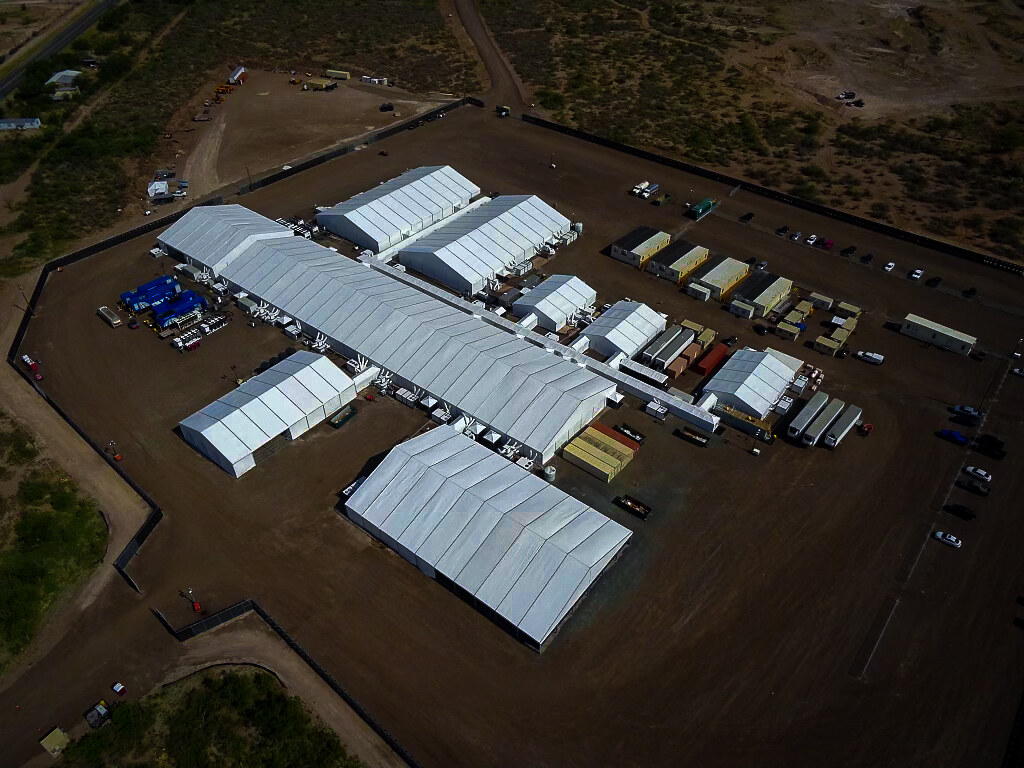AUSTIN, Texas — Federal law enforcement on the U.S.-Mexico border shared an inside look at the immigration crisis unfolding under President Joe Biden in an effort to shine a light on the revolving door of migrant apprehensions and releases that has no end in sight.
The Washington Examiner obtained exclusive videos and pictures from three agents in the Border Patrol’s Del Rio Sector that offer a rare glimpse into the well-organized government response to the chaos that the border has fallen into over the past 18 months. Media are not allowed inside Border Patrol’s holding stations or the massive tents they have set up as overflow processing centers.
In interviews with agents, all communicated that the mission was not to deter illegal immigration, which is unfolding at the highest level in national history. The goal is to get people who come across into a facility, processed into the system, and, more likely than not, released into the United States rather than returned to their country of origin. If people could see inside, they would be repulsed by the scale of the migrant detention operation, one Border Patrol agent told the Washington Examiner.
“I think they’d be disgusted — not because it’s dirty. It’s not dirty at all. I think they’d be disgusted at the situation and that nobody can wrap their head around what’s going on,” said the agent who works at the newest massive tent complex where migrants are processed, located outside Eagle Pass, Texas.
SUPREME COURT BLOCKS BIDEN’S ATTEMPT TO RESTORE IMMIGRATION POLICY GOVERNING ICE
The Trump administration drew fury from Democrats over how it handled smaller flows of people during the 2019 humanitarian crisis, and the Biden-Harris campaign pledged to improve conditions for migrants.
While the Biden administration has succeeded to some extent in detaining migrants for only one to two days, in better-lit and air-conditioned rooms as opposed to outside under a bridge or in cells for weeks, much is still the same. Small rooms are crammed with dozens of people. Migrants sleep on the floor in spaces meant for recreation and sports, according to a picture obtained by the Washington Examiner. Later, they will be afforded 4-inch-thick mats and shiny Mylar blankets when they move to a separate area with hard floors, according to two agents.

But this is the reality in Eagle Pass, which Rep. Tony Gonzales (R-TX) has described as the “epicenter” of the border crisis because the town’s agents apprehend between 1,000 and 1,500 noncitizens coming into the country illegally each day.
Twelve miles outside city limits is where the massive outdoor structure, known as “Fire Fly” for the name of the road it was built on this spring to hold hundreds more migrants due to overwhelmed facilities across the region. Fire Fly is more than 153,000 square feet of indoor space and can hold up to 1,000 people safely. The Border Patrol’s parent agency, U.S. Customs and Border Protection, highlighted the many amenities of the space before it opened in mid-July.
Throughout the night and day, smugglers push migrants on foot across the Rio Grande from Piedras Negras in Mexico in groups ranging from 40 to 80 people, while others can swell up to 300 people each.
“Since the groups are so large, there’s no room for where we do the intake, so they have to take them to the rec area,” said the first Border Patrol agent, referring to an area with green artificial grass.

Most migrants in custody are being detained for shorter periods than during the Trump administration due to management’s push for expeditious processing and throughput. Consequently, the focus on speed and efficiency has turned this and other Border Patrol facilities into churning processing stations. Migrants constantly come in and then are let out into the United States, not detained but monitored through technology.
Processing people is the job of agents here, including fingerprinting, photographing, feeding, housing, cleaning up after, providing medical attention, and more.
Eagle Pass, a town of 29,000 residents, is part of the Border Patrol’s 245-mile-long stretch of border referred to as the Del Rio Sector and includes the small town of Del Rio, where 30,000 mostly Haitian migrants surged across the Rio Grande last September. The area is comprised of mostly farms, ranches, and hunting grounds but has become a top destination for migrants and their smugglers because it has very little border wall, the river can be crossed, and major highways on the Mexican side provide easy access to the border.
As of this week, agents in the Del Rio Sector had taken 27,000 noncitizens into custody in July alone.
Eagle Pass was struggling in April to accommodate the record-high 500 migrants that Border Patrol was releasing at the doorstep of its only nonprofit group, Mission Border Hope, every day. It was the equivalent of half the town’s population being released each month. That problem has not improved aside from GOP Gov. Greg Abbott’s initiative to provide free buses to border towns so that migrants who wish to depart for Washington can do so and ease the pressure on flights and other transportation services out of town.

“The fact remains the same, thousands of people are crossing daily and it doesn’t stop and it seems the federal government does not care that we are overrun with people in our community,” said Eagle Pass Mayor Rolando Salinas Jr., in a text message Friday. “I see no end to this any time soon, unfortunately.”
This spring, the Border Patrol asked Salinas if it could erect a massive outdoor facility on the town’s public golf course on the border due to space shortages at its stations. He refused, prompting the Border Patrol to put one up 12 miles outside of town but next to the county airport. The tent compound complemented two existing Border Patrol stations, which each receive 300 to 400 people daily.
“I haven’t been inside that one. I don’t see the point in going,” Salinas wrote in a message. “It’s hundreds of people being processed coming in and out. Same thing over and over. I am allowed in. I’ve gotten the tour from top Border Patrol officials of the other site. It’s just frustrating and redundant.”

Gonzales will lead a tour of mostly House Republicans and one Democrat to Eagle Pass on Monday. The group will stop in the tent compound, according to Gonzales’s spokeswoman.
Rep. Henry Cuellar, an outspoken border Democrat from down the road in Laredo, said people “don’t understand what’s happening” inside these facilities, in part because the towns of Del Rio and Eagle Pass have never battled illegal immigration as the Rio Grande Valley in South Texas has, making the phenomenon out of sight and out of mind to even Texans.
“For those of us who live on the border, this is not a hidden crisis. It’s in our faces every day,” said Cassy Garcia, the Republican nominee running against Cuellar in November. “We need Congress and the Biden administration to take decisive action that will secure our border and protect our communities. So far, our pleas have fallen on deaf ears. Not only is there a lack of action, but there seems to be a willful attempt on the part of many Democrats to pretend that this crisis doesn’t even exist.”
Migrants apprehended for illegally crossing the border are taken to either a local station or tent, sent an hour or so to a different station in Laredo or Del Rio, or flown out. Agents feel as though it is a race as to how fast they can load people into charter buses at the border, drive to a processing facility or station and unload, book people into the system, and then get them out the back door. It’s the new normal.
“Pretty much Colombians, Venezuelans, Cubans get released,” said the second agent. “We spend all our time trying to intake and process all these bodies. We have a couple agents out in the field.”
An in-house gas station on-site at Border Patrol’s Del Rio station looks as though it was transformed into the region’s own version of Grand Central Station in New York, serving as a depot for migrants being taken to and from places. Large white charter buses pull in and out multiple times in an hour and all through the night. Companies that transport migrants have a booming business, the second border agent said.
“They ship out these people everywhere. We’ve got planes going to San Diego, Dallas, everywhere,” said the second Border Patrol agent. “They’ve just gotten more efficient at farming people out and getting them processed at other stations that aren’t as busy, and they’ll get released over there to [nongovernmental organizations].”
CLICK HERE TO READ MORE FROM THE WASHINGTON EXAMINER
Agents do not see any change on the horizon — aside from more demands to speed up the pace at which they transport, process, and release people.
“There’s no plans for it to end,” the first agent said. “They wouldn’t have opened this huge new facility if it was going to end.”





